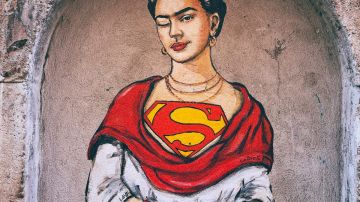#TBT 7 Ways Frida Kahlo Has Cultivated Our Culture
Frida Kahlo’s birthday is near (July 6, 1907), and you know we had to celebrate with a collection of articles that both honor her, and inform readers of her life and influence

Photo: Unsplash/@veroniki
Frida Kahlo’s birthday is near (July 6, 1907), and you know we had to celebrate with a collection of articles that both honor her, and inform readers of her life and influence. She may have not been acknowledged enough during her life, but today, she is now a worldwide icon of art, feminism, and fearlessly being yourself. This week’s #TBT is all about seven ways in which Frida has cultivated our culture. Que viva Frida!
Her Influence on Art still impacts us today.
Frida Kahlo’s art was unapologetic in its depiction of women’s issues—their pain, love, gender roles, and other things that they were expected to generally keep to themselves. Her Surrealist work was colorful and often was in the form of portraits and self-portraits. Mexican culture and nature were recurring themes.
wp_*posts
She set her own beauty standards.
https://www.instagram.com/p/BTJ7_X5h9t3/?tagged=fridaeyebrows
Frida embraced her looks and in the process, gave millions of girls the inspiration and self-esteem to do the same. Her bold, connected brows have become legendary and many beauty lovers have reinterpreted her look, time and time again.
wp_*posts
She was an OG feminist.
https://www.instagram.com/p/BkD9ScYDWrX/?tagged=fridakahloquotes
Kahlo was no doubt a strong woman, and she showed this through her art, and legendary quotes. She fully and deeply lived each moment of being a woman and encouraged other women to live their truths, get what they want out of life, and be fearless.
wp_*posts
She was refreshingly open about love.
In a time where women were expected to be straight (or be silent), Frida Kahlo was a proud and open bisexual woman. Again, she wasn’t afraid to live her truth and became a LGBTQ icon in the process.
wp_*posts
She had strong Indigenous pride
Spanish culture and ancestry is usually held to high regard in Latin American countries, while Indigenous culture has been oppressed and suppressed. Frida Kahlo loved and celebrated her native roots, evident in her ornate Tehuana outfits, glorious braided and flowered hair, and indigenous-inspired art.
wp_*posts
She embraced both her masculine and feminine energy.
There is no doubt Frida Kahlo was ahead of her time. She was not afraid to show her masculine side, by wearing men’s suits, slicking back her hair, and painting herself in the same light.
wp_*posts
She brought Mexico to the masses.
Definitely one of the biggest things that Frida Kahlo did was show Mexican (and Latino) art and culture to the world. She showed that they were both beautiful, worthy, and brimming with excellence. She proved that Mexican art deserved to be hung in prestigious galleries, alongside those of European artists; that a Mexicana could be the one to take the art world by storm. Frida was talent and she was hope.
[tps_footer][article_ad][/tps_footer]

















